Kishu Lacquerware
History of Kishu Lacquerware

The Beauty of Tradition in Daily Life
Kishu Lacquerware has developed in Kuroe, a historical town. When was Kishu lacquerware born and how has it evolved? Let’s delve into the lacquerware’s history.
Kishu Lacquerware was first produced in the Kuroe district, located in the northwest section of Kainan City, Wakayama Prefecture. It is known as one of top three lacquerware centers, along with Aizu lacquerware (Fukushima Prefecture) and Yamanaka / Wajima lacquerware (Ishikawa Prefecture).
The history of Kishu Lacquerware is said to have begun with the Shibuji bowl made by a Kishu Kijishi during the Muromachi Period. In addition, the Buddhist monks in Negoro-ji (currently Iwade City) produced their own temple furnishings, such as tables, bowls, trays, and small shrines. This has also been called one of the origins of Kishu Lacquerware.
A lacquerware series began in Negoro-ji, called “Negoro Lacquerware.” Vermillion lacquer was applied over the black primer coat. Since these were made by the hands of untrained monks, as the items were used, the surface vermilion naturally wore away, exposing the primer coat here and there. However, this added depth to the item, increasing its beauty.
Later, when Hideyoshi Toyotomi attacked Negoro, a monk, along with his techniques and skills, escaped. He performed lacquer work in Kainan City, which then spread. During the middle Tokugawa Period, the work was carried out and prospered under protection of the Kishu Domain.
In 1826, (9th year of the Bunsei Era) a craftsman named Chobei Ogawaya successfully produced Kataji Itamono (solid board, semi-finished), which led to the application of gold lacquer decoration and the direct sale to foreign traders in Nagasaki and Kobe.
As Kishu Lacquerware developed, it lost the protection of Kishu Domain due to the abolition of feudal domains and the establishment of prefectures during the Meiji Restoration, and appeared to decline. However, it gradually recovered with the start of full-scale trading in 1870. The Chinkin-bori (gold-inlaid lacquerware) technique from another prefecture was introduced in 1879. In 1898, a gold lacquer master from Kyoto was invited in order to improve gold lacquer techniques.
Entering the Showa Period, varied coating methods were invented, such as Tendo coating, Kinkou coating, and silk coating,further enhancing the characteristics of Kishu Lacquerware. In 1949, Kishu was designated as an important lacquer industrial park by the government, and in February 1978, the Ministry of International Trade and Industry (current Ministry of Economy, Trade and Industry), designated Kishu Lacquerware as a “Traditional craft.” As a result, Kishu Lacquerware has further developed as a traditional industry representing Wakayama Prefecture.
Manufacturing process of Kishu Lacquerware
Resin products
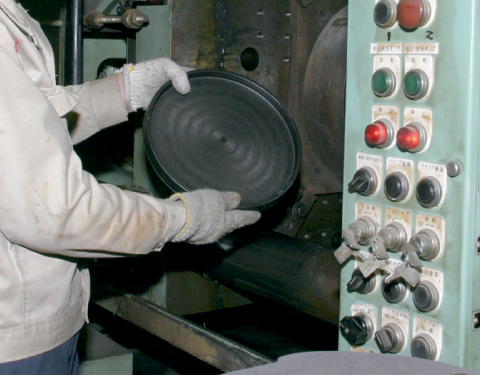
1.Press process
Resin material is pressed into a mold, and formed by heat and pressure.
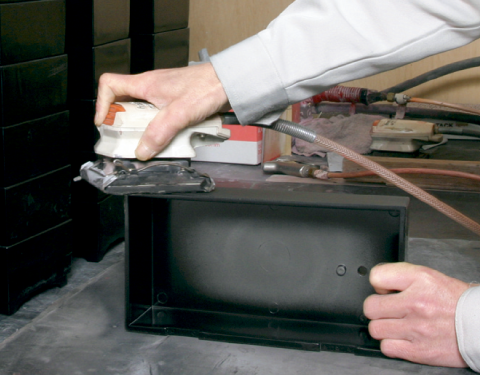
2.Polishing process
The resin surface is polished to increase adhesion of the paint and resin.
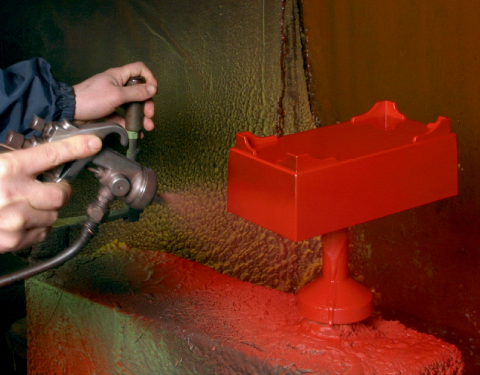
3.Painting process
Urethane paint (paint certified by the Food Sanitation Act) is used to finish the surface to a beautiful gloss.
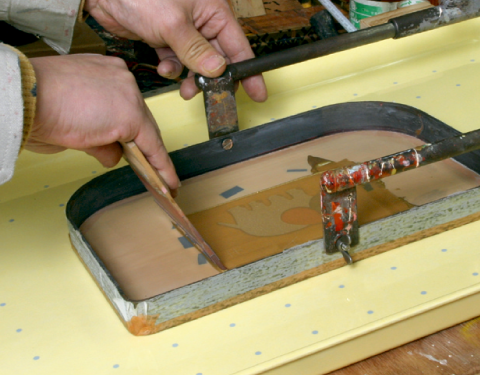
4.Decorating process
Paint and imitation gold dust are used to accurately print on the coated products by machine.
Wooden products
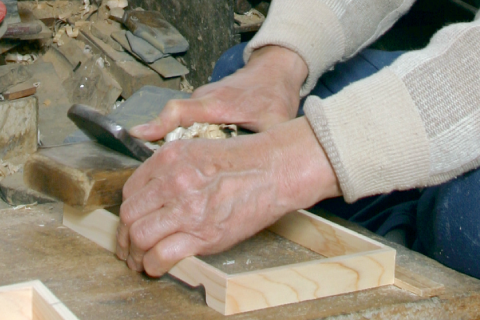
1. Wood processing
The wood is cut to a certain size and then allowed to dry to avoid deformation. Joinery, such as multi-tiered food boxes and letter boxes, are made using saws and planes.
| Wood lathing product |
| Wooden board assembled product Corner finishing Soaking in hot water to bend Scored with a saw to gradually bend |
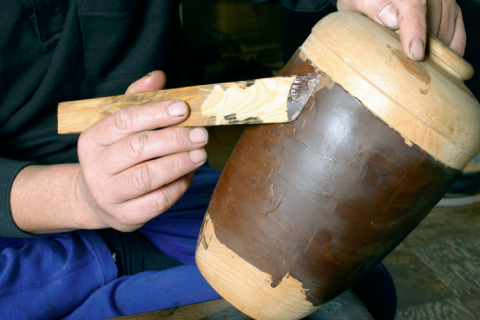
2.Process of the base material
Any deformation which may have occurred to the wood material is repaired, and the wood is prepared.
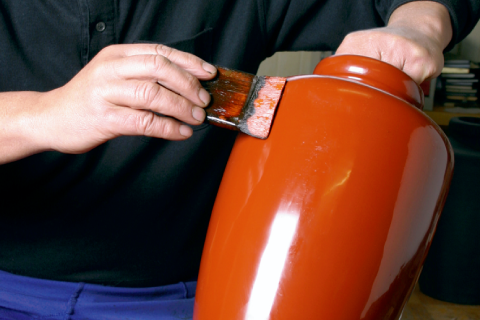
3.Coating process
Through processes such as base coating, mid-coating, and top coating, the finish becomes fuller and more beautiful.
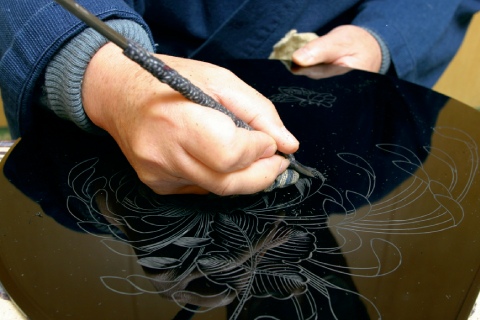
4.Decorating process
Gold dust and colored lacquer are applied to the coated product. Each is hand-decorated for an exquisite finish.